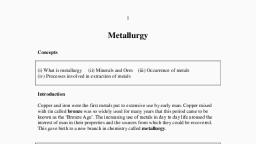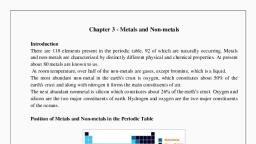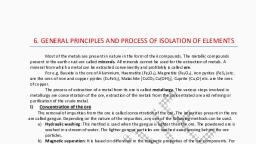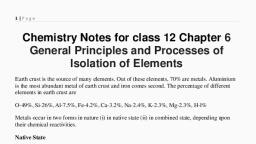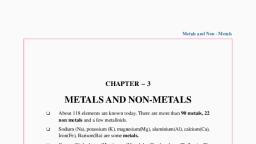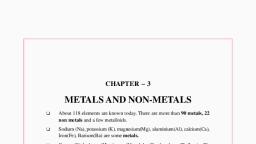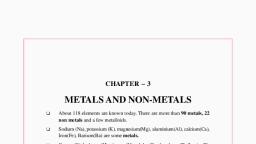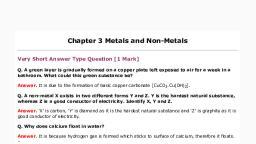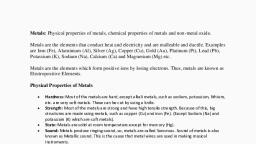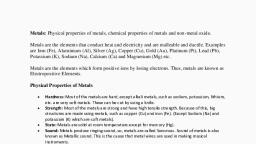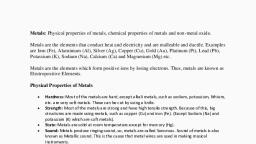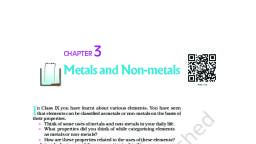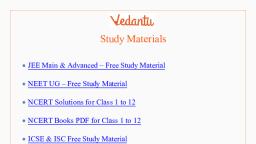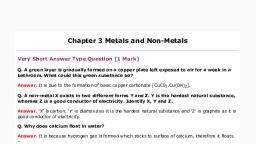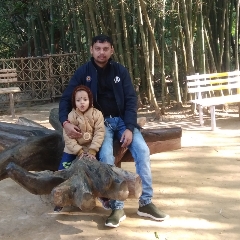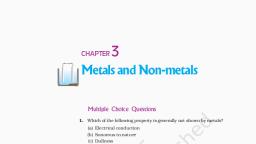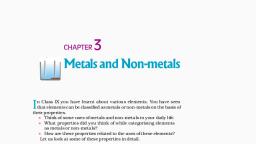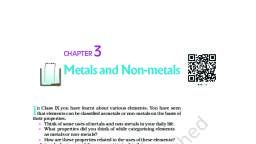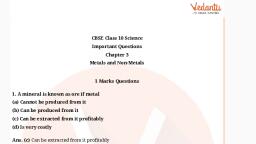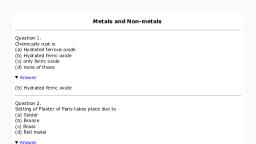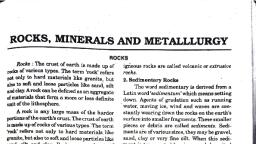Page 1 :
II Extraction of crude metal from the ore , Extraction of the metal from its ores depends on the reactivity of the metal., To understand the order of reactivity of metals, we study their chemical reactions with cold water, steam, dilute strong acids and Cl₂ and based on their vigorous activity order in these reactions we frame out activity series., Arrangement of the metals in decreasing order of their reactivity is known as activity series., Reduction of purified ore to the metal The method used for a particular metal for the reduction of its ore to the metal depends mainly on the position of the metal in the activity series., Extraction of Metals at the top of the activity series , (K, Na, Ca, Mg and Al). Simple chemical reduction methods like heating with C, CO etc to reduce the ores of these metals are not feasible., The temperature required for the reduction is too high and more expensive.
Page 4 :
B) Extraction of metals in the middle of the activity series , (Zinc, iron, tin, lead and copper): , The ores of these metals are generally present as sulphides or carbonates in nature. Therefore prior to reduction of ores of these metals, they must be converted into metal oxides., Sulphide ores are converted into oxides by heating them strongly in excess of air. This process is known as roasting., Generally the sulphide ores are roasted to convert them into oxides before reducing them to metal. , Eg: 2PbS + 3O₂ 2PbO + 2SO₂ , The metal oxides are then reduced to the corresponding metal by using suitable reducing agent such as carbon, i) Reduction of metal oxides with carbon: The oxides are reduced by coke in a closed furnace which gives the metal and carbon monoxide (CO). PbO + C ––at 1400⁰C Pb + CO
Page 5 :
ii)Reduction of oxide ores with CO , Eg: Fe₂O₃ + 3CO ––––––––– > 2Fe + 3CO₂ , iii) Auto (self) reduction of sulphide ores: , In the extraction of Cu from its sulphide ore, the ore is subjected partial roasting in air to give its oxide. , 2Cu₂S + 3O₂ -- 2Cu₂O + 2SO₂, When the supply of air is stopped and the temperature is raised. The rest of the sulphide reacts with oxide and forms the metal and SO₂. , 2Cu₂O + Cu₂S -- 6Cu + SO₂, iv)Reduction of ores (compounds) by more reactive metals. , Thermite process involves the reaction of metal oxides with aluminium. When highly reactive metals such as sodium, calcium, aluminium etc., are used as reducing agents, they displace metals of lower reactivity from the compound., These displacement reactions are highly exothermic. The amount of heat evolved is so large that the metals produced are in molten state.
Page 6 :
The reaction of Iron (III) oxide (Fe₂O₃), with aluminium produces molten iron which is used to join railings of railway tracks or cracked machine parts. This reaction is known as the thermite reaction. , Fe₂O₃ + 2Al Al₂ O₃ + 2Fe + Heat , Cr₂O₃ + 2Al Al₂ O₃ + 2Cr + Heat





















